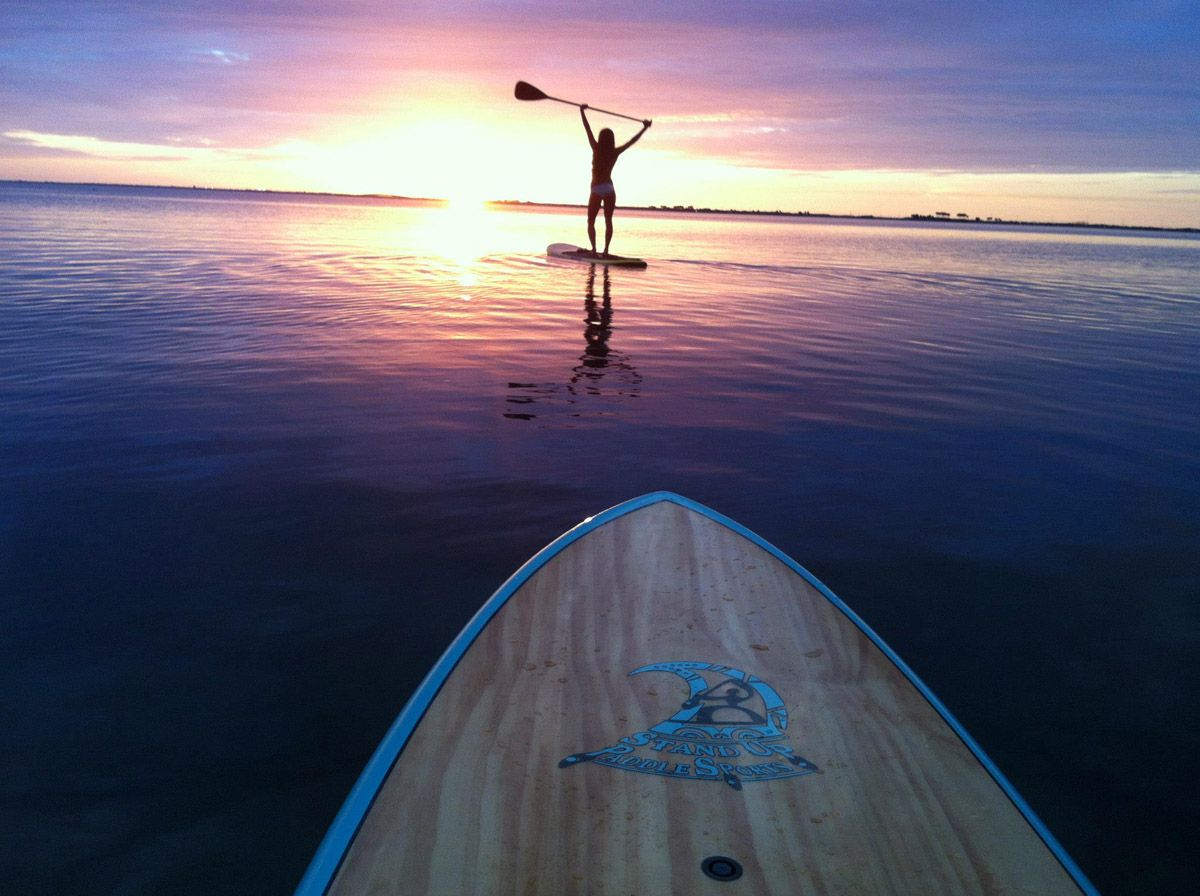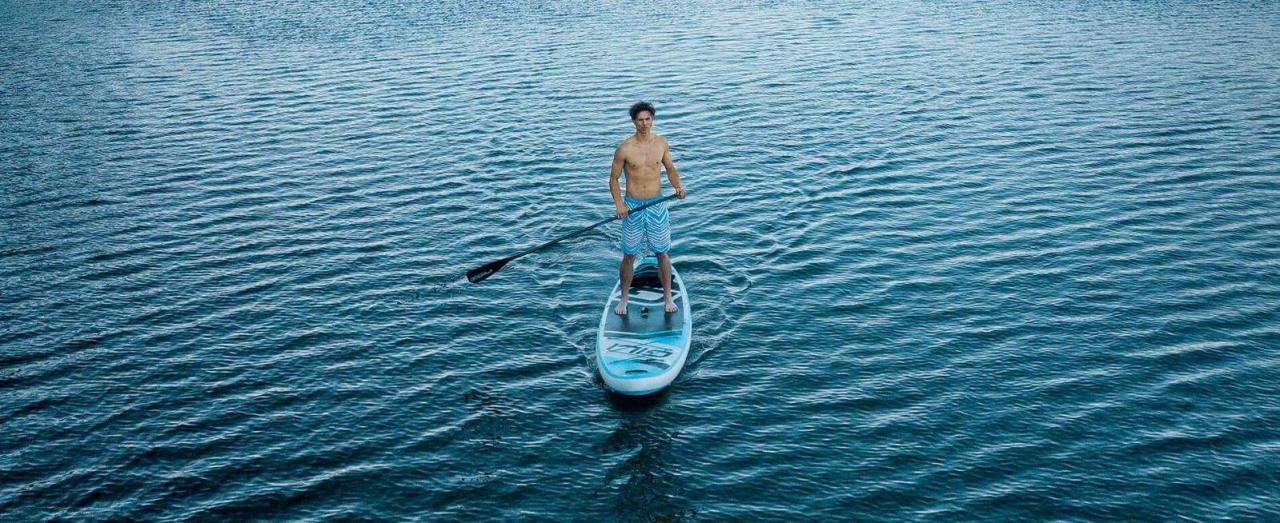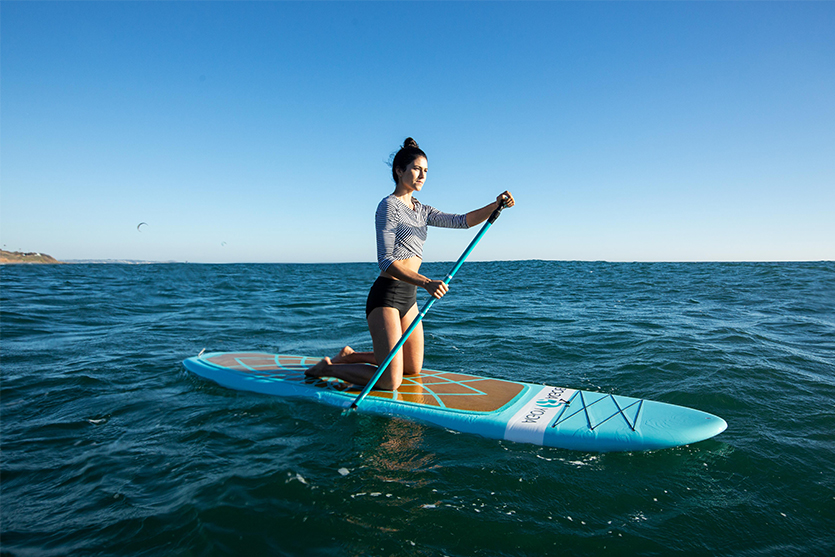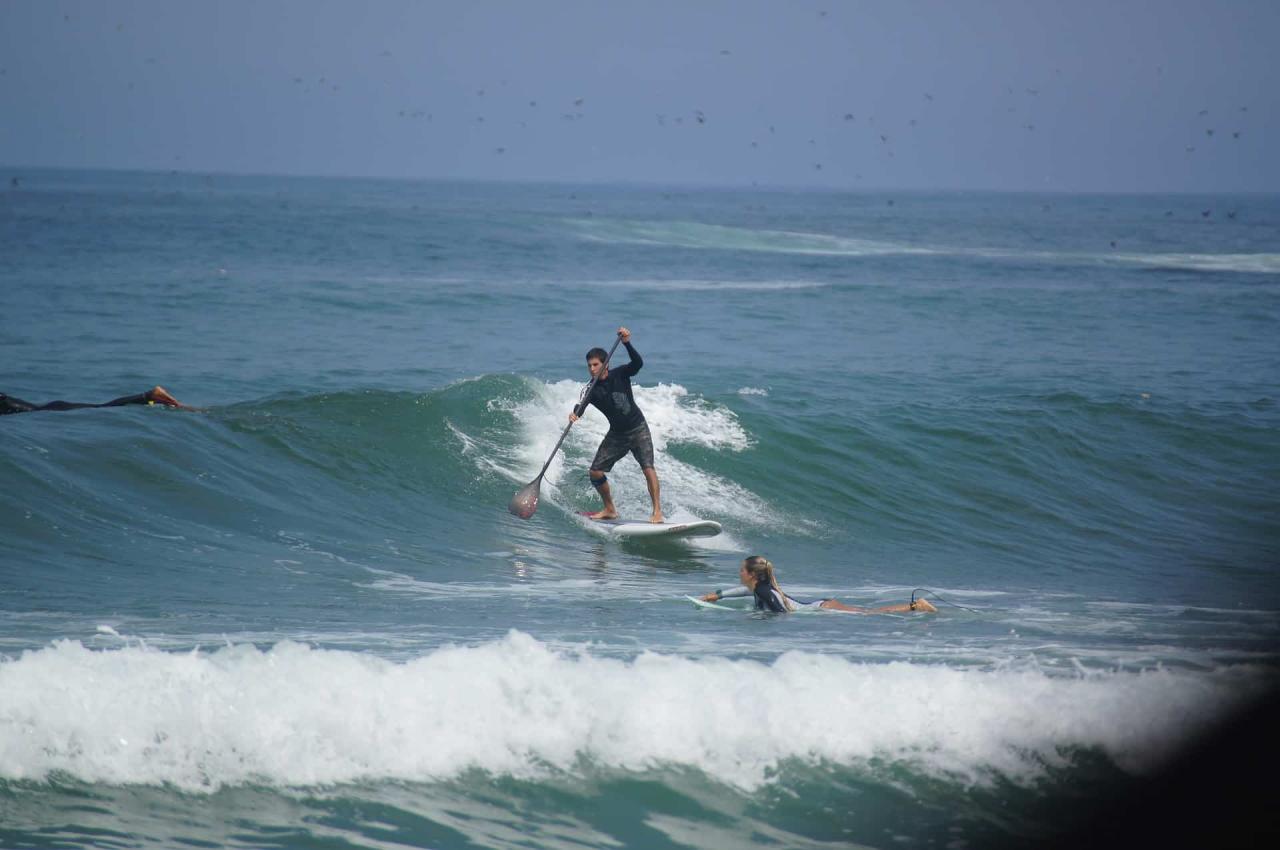Stand up paddling or stand up paddling (SUP for short) has long since ceased to be an insider tip among those looking for sport, fun and relaxation.

Read here which sports still feel like vacation.
Simple: stand up, kick off and paddle!

To become a stand up paddler, you basically only need the courage to stand on the board with a paddle in hand and just start paddling. “In principle, SUP can be learned quickly as a popular sport,” says Severine. What is supposed to happen except that you might fall into the water?
The technique of stand up paddling is child’s play: Place your feet hip-width apart at the height of the handle, bend your legs slightly, push off the edge and just start paddling. If you don’t want to fall into the water right away, you can start à la Pocahontas on your knees first.
Many bodies of water: off to the lake, river or sea
If you surf the net a bit, you will quickly discover that there is always a navigable river or lake around the corner. And that is exactly what makes stand up paddling so appealing: “Unlike in a kayak or canoe, you perceive nature in a completely different way on the stand up board!
All around, water and fresh air, you can’t help but feel free! For nature-loving people who like to be active, SUP is an ideal sport to clear their heads ”, enthuses Severine.
Corona compatible: The distance is maintained
If you stand on a three meter long board and paddle across the water with it, you don’t run the risk of getting close to others. This also makes the boards the sports equipment of the “Corona summer”.
“If you are already on holiday at home, then you should enjoy the summer with family and friends and use it to get to know your city better from the board,” recommends Severine.
SUP is a holistic workout

With all the advantages of stand up paddling, you usually don’t even notice that it is a super effective full body workout. “Because of the constant balancing, SUP stresses the whole body and is gentle on the joints.
In order to move on the board, the whole body must be under tension. The upper body muscles, stomach and back are strengthened! Balancing gives legs and bottom an extra portion of training, ”explains Severine.
SUP is also good for the head
Nowhere is it easier to leave everyday work behind you than while paddling on the lake. The silence, the foresight and the extremely calming, stress-free atmosphere ensure mental relaxation. “Get out of everyday life – into pleasure!”
Which SUP board is useful for beginners?
As with all other sports, there is a huge selection of accessories for stand up paddling. Good equipment is important so that you don’t lose interest in it. “A board has to have a good position in the water. It must not twist in itself or even fluff up in the heat! When you are alone on the water, you also want to have something safe under your feet! ”Explains the expert
So what do you have to consider when buying your first board?

There are hardboards and inflatable boards: an inflatable board is softer and lies higher above the water; a hardboard, on the other hand, has a direct implementation so that you can work with your own body weight.
However, if you have never stood on a paddle board or surfboard, you should – whether inflatable or hardboard – opt for one that is at least three meters (ten feet) or longer. The width of the board determines the stability. It is therefore advisable for beginners to opt for a slightly larger board, between 80 to 86 cm wide.
With beginner boards, the focus is clearly on stability, so that even inexperienced people can paddle straight away. “With boards that have no stability in the standing area, one can observe it again and again: The board simply sags, so that SUPers stand low in the middle. The board points upwards like a banana at the front and back ”, Severine knows from experience.
Even SUPers who do not properly inflate their inflatable board are not stable. In this case you start to turn around your own axis and don’t get anywhere!
For those who have little storage space and hardly any transport options, Severine recommends an inflatable SUP. These inflatables are easy to transport and can also be conveniently stored at home. Important with the inflatable boards: Do not leave them unnecessarily in the blazing sun, because that way the air can escape.
If you want to do stand up paddling more like a race or if you want to “paddle your head free really fast”, the expert advises a hardboard. These can be used to build up a higher speed.
Basically, before buying your own SUP, you should ask yourself what purpose and what requirements the board should fulfill.
Because you can now buy such a SUP board not only in sports shops, but Also in the hardware store, in the coffee shop and sometimes even at the discounter and these things including paddles and pumps are not that cheap at around 300 euros, it is advisable to seek advice from the specialist dealer around the corner or the rental stations before buying!
It is even better to try out a SUP board directly. “You can tell very quickly – depending on your weight and center of gravity – which board suits you!”
